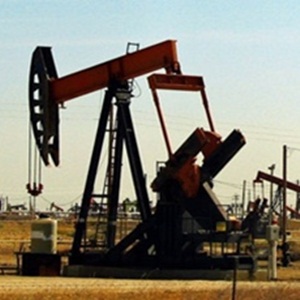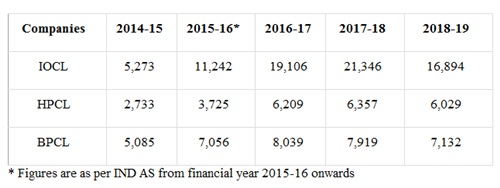Overall contribution of the petroleum sector to the exchequer - both central and states – rose around 79 per cent to Rs595,438 crore in 2018-19 from Rs332,619 crore in 2014-15, according to government figures.

While central government revenues from the oil sector rose to Rs365,113 crore in 2018-19 from Rs172,065 crore in 2014-15 to 365,113 in 2018-19, the sector’s contribution to state exchequers rose to Rs230,325 crore in 2018-91 from Rs160,554 crore in 2014-15.
Giving this information in a written reply in the Lok sabha on Monday, union minister of petroleum and natural gas, Dharmendra Pradhan, also said profits and revenues of state-owned oil refining and marketing companies also saw a big leap during the four-year period.
Public sector giant Indian Oil Corporation recorded the highest increase in profits at Rs16,894 crore in 2018-19 a 320 per cent increase compared to the profit of Rs5,273 crore in the 2014-15 financial year.
Hindustan Petroleum Corporation Ltd (HPCL) reported a profit of Rs6,029 crore in the year 2018-19 against a profit of Rs2,733 in 2014-15.
Bharat Petroleum Corporation Ltd (BPCL) saw its profit increase to Rs7,123 crore in the 2018-19 fiscal from Rs5,085 crore in 2014-15.
The combined profits of the three PSU oil companies increased by nearly 30 per cent to Rs30,055 crore in 2018-19 from 13,091 crore in 2014-14.
The government had, in June 2010, allowed oil marketing companies to link petrol prices to market and that of diesel from October 2014. Since then, these public sector oil marketing companies have been taking appropriate decisions on pricing of petrol and diesel in line with international product prices and other market conditions, the minister pointed out.
The minister also informed the House that the government has expanded its search for alternative sources of energy, including biomass, wind, solar and hydel power, in order to safeguard India’s energy sources.
H4e said, biomass and organic waste sources like paddy straw, farm stubble, agricultural residue, cattle dung, sugarcane press mud, distillery spent wash, municipal solid waste, sewage treatment plants waste, etc offer huge potential for biogas production.
Government, he said, is promoting the use of compressed bio gas (CBG) as an alternative green transport fuel for efficient management of biomass and organic waste. In this direction, oil PSUs have launched ‘Sustainable Alternative Towards Affordable Transportation’ (SATAT) initiative on 1 October 2018. SATAT initiative has the potential of addressing environmental problems arising from landfill emissions, farm stubble burning, etc and also bring down dependency on oil/gas import, he pointed out.
Till June 2019, oil marketing companies and gas marketing companies have awarded letters of intent (LoIs) for 344 plants for production and supply of CBG, he added.
























